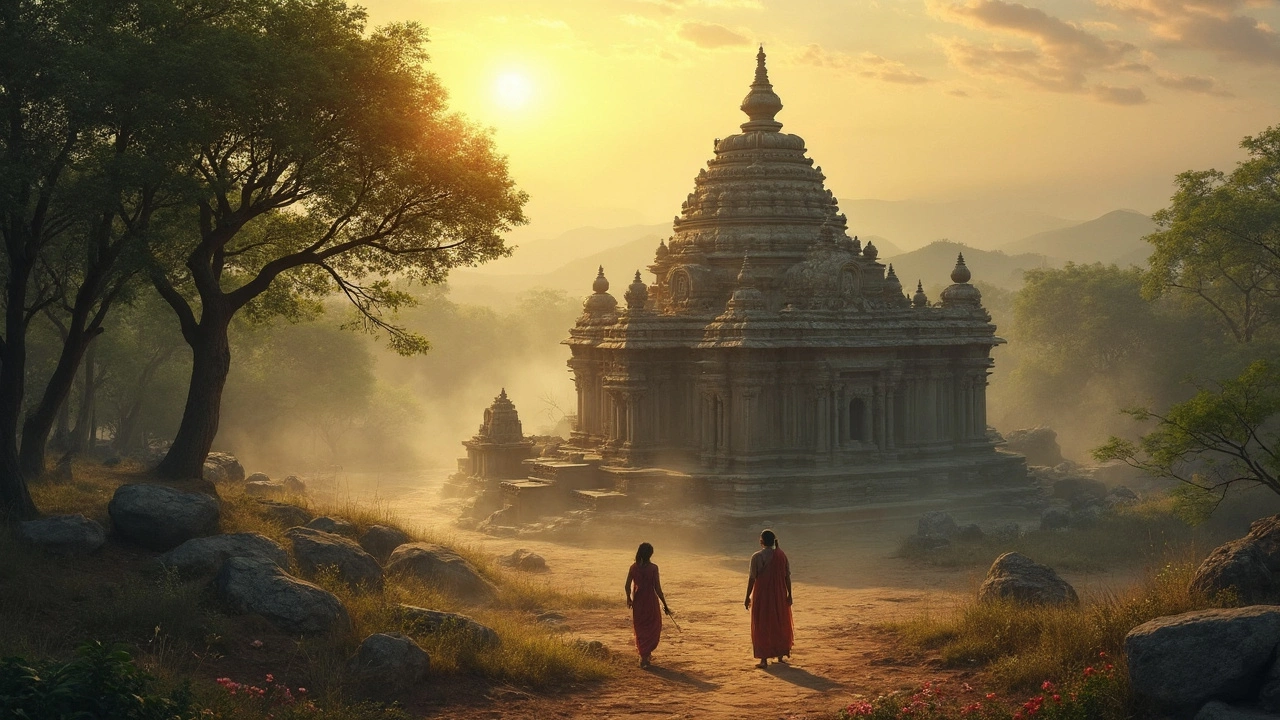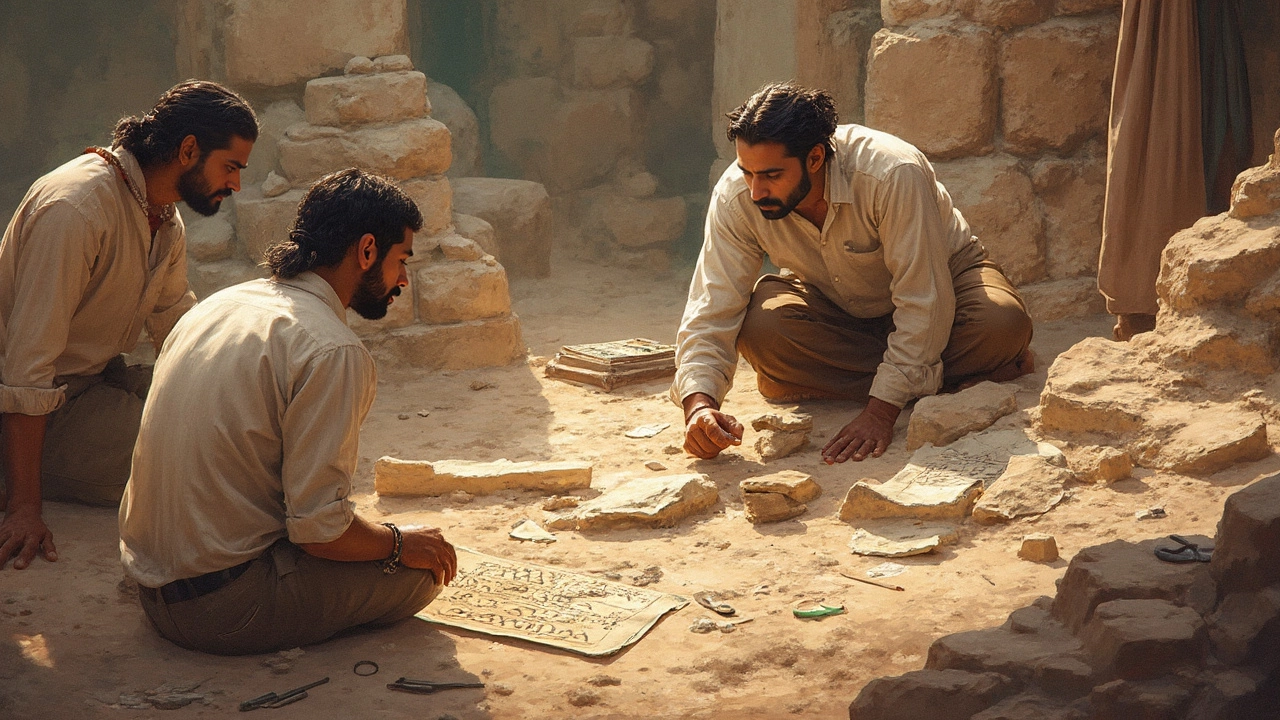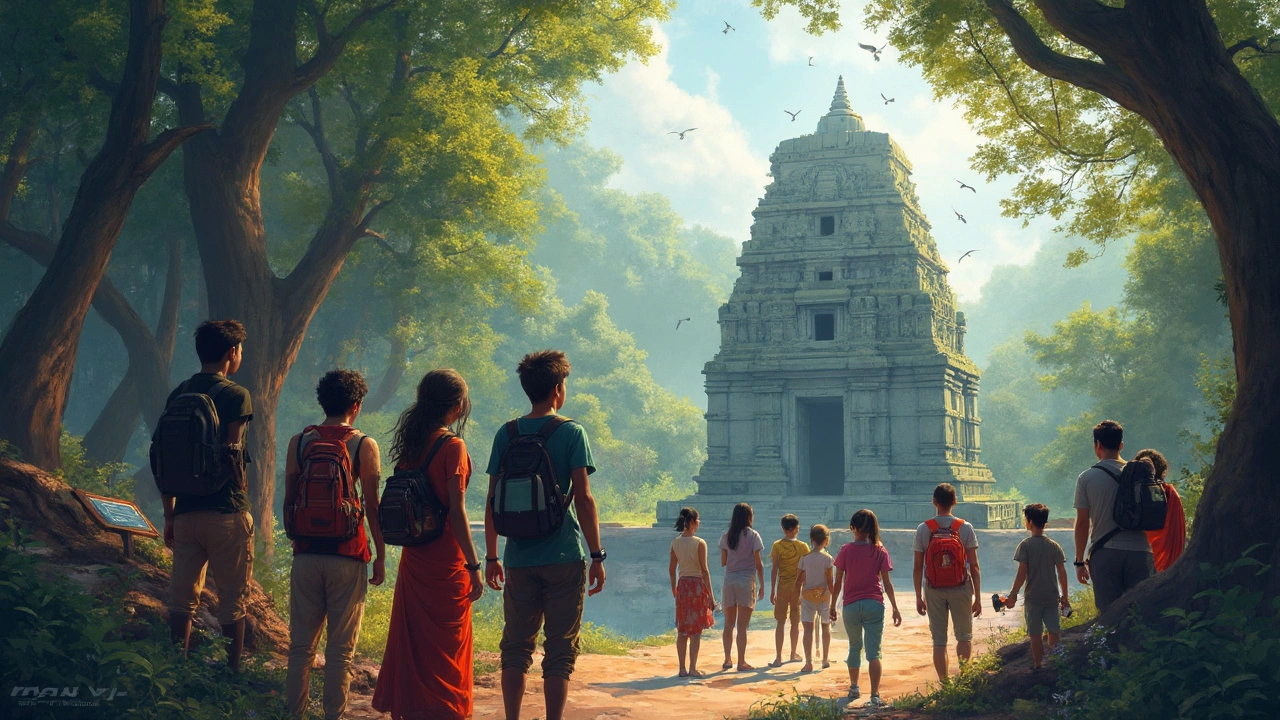Which Temple Is 20,000 Years Old in India? Mysteries, Myths, and Hard Facts
 May, 15 2025
May, 15 2025
Think you can visit a 20,000-year-old temple in India? That story pops up every now and then, but it's not as straightforward as it sounds. The Sandhyavalli Temple in Tamil Nadu is often mentioned in these wild claims, with social media posts and YouTube videos throwing around huge numbers with zero hard proof. It makes you wonder: are these ancient temples really that old, or is it just a good story mixing local myths with some creative math?
If you've got temples on your travel checklist and you’re hunting for the oldest, it helps to know which claims actually hold up—and which are all smoke. India has temples that date back thousands of years, like the Mundeshwari Devi Temple and the Jagatpita Brahma Mandir, both with roots proven by stone and record. But when someone throws out a number like 20,000, it pays to look closer. Before you book a temple tour based on viral legends, let's separate history from popular rumor so your trip packs in real wonder, not just internet hype.
- The Origin of the 20,000-Year-Old Temple Claim
- What the Archaeologists and Experts Say
- Tracing India’s Oldest Verified Temples
- Practical Tips for Ancient Temple Tours
- Why Are Such Legends So Popular?
The Origin of the 20,000-Year-Old Temple Claim
The whole idea that there's a 20,000 year old temple in India really took off thanks to viral posts, shared mainly on social media and WhatsApp groups. The Sandhyavalli Temple, tucked away in Tamil Nadu, gets name-dropped a lot. People say it's unbelievably ancient, even older than the oldest Egyptian pyramids. Sounds mind-blowing, right? But here’s the twist—there's no solid proof for that age.
Where did the number 20,000 come from? It’s not from any scientific paper or archaeology team. Most claims trace back to local folklore or people quoting each other online, not to any excavation report or carbon dating results. The actual inscriptions and carvings found at these temples usually suggest way later dates, more in the range of a few thousand years at most. No expert or government source backs the 20,000-year timeline.
For some quick context, here’s a table showing what we really know about ancient Indian temples and other old sites around the world:
| Site | Location | Estimated Age | Notes |
|---|---|---|---|
| Mundeshwari Devi Temple | Bihar, India | Around 2,000 years | Oldest functional temple in India, dated by ASI |
| Sandhyavalli Temple | Tamil Nadu, India | No verified age | Claimed to be 20,000 years old (unproven) |
| Göbekli Tepe | Turkey | About 11,000 years | World’s oldest known temple site |
Now, it’s common in India for temple histories to get mixed up with local legends. These stories add charm, but they don’t always line up with what digs and dates reveal. Even the Archaeological Survey of India (ASI) hasn’t found evidence for a temple in India being anywhere close to 20,000 years old. The real number—at least for anything proven—doesn’t even hit half that.
So next time you see a viral post about India’s "oldest temple," double-check where the number comes from. If it’s not from experts, chances are it’s just a great story that’s grown legs on the internet.
What the Archaeologists and Experts Say
Archaeologists aren’t buying the 20,000-year-old temple claim. In fact, they roll their eyes at numbers that big. Human civilization itself isn’t that old—at least not in the sense of built temples. The oldest known stone temples on earth, like Göbekli Tepe in Turkey, clock in at around 11,600 years old. In India, proven ancient temples don’t go anywhere near 20,000 years.
The majority of archaeologists agree that temples in India with hard proof usually date between 2,000 and 2,500 years ago. Temples from the early centuries BCE, like the Mundeshwari Devi Temple in Bihar or the Dashavatara Temple in Deogarh (around the 5th century CE), have inscriptions, ancient coins, and old records backing their age.
Let’s bust some myths with facts:
- 20,000 year old temple India stories are mostly local legends and viral memes—not evidence-backed history.
- Most ancient Indian temple architecture started showing up during the Mauryan and Gupta periods, between 3rd century BCE and 6th century CE.
- No current archaeological dig in India has found temple structures or idol worship from 20,000 years ago. Stone Age finds in India do exist—but those were simple stone tools, not temples.
Here’s a quick look at how old some of India’s oldest verified temples really are:
| Temple Name | Location | Estimated Age | Proof/Evidence |
|---|---|---|---|
| Mundeshwari Devi Temple | Bihar | ~2,100 years | Inscriptions, records |
| Jagatpita Brahma Mandir | Pushkar, Rajasthan | ~2,000 years | Archaeological studies, texts |
| Dashavatara Temple | Deogarh, MP | ~1,500 years | Gupta-era archaeology |
One more thing, experts often say that claims of much older temples mostly come from local folklore. These stories are colorful, but you won’t find them in any real archaeological report or peer-reviewed study. If you’re searching for ancient wonders, stick with places that have solid dates and evidence behind them—the real thing is impressive enough on its own.

Tracing India’s Oldest Verified Temples
If you’re serious about finding ancient Indian temples that are actually confirmed by historians, you want to focus on places where there’s real evidence—things like inscriptions, carbon dating, and surviving records. Myths are cool, but let’s stick to what’s proven.
The Mundeshwari Devi Temple in Bihar often tops the list. There’s an inscription dating it back to 108 AD, and archeologists say it could easily be the oldest functional temple in the country. It’s a simple stone building, definitely not flashy, but people have prayed here for nearly 2,000 years. You’ll still see daily rituals just like folks did way back.
Then there’s the Jagatpita Brahma Mandir in Pushkar, Rajasthan. It’s claimed to be over 2,000 years old, but the structure you see today is about 700 years old, rebuilt after centuries of invasions. The site itself though has almost non-stop worship records, making it one of the oldest continuous temple sites in India.
The Kailasa Temple in Ellora, Maharashtra isn’t the oldest chronologically—it was carved out of a mountain in the 8th century—but the sheer effort involved is staggering. It’s not just a temple, it’s a carved mountain, and it shows the kind of ambition that ancient India was capable of.
If you go south, the Chennakeshava Temple at Belur and the Brihadeeswarar Temple in Thanjavur deserve a look. These Chola dynasty monuments, built a thousand years ago, are UNESCO sites with detailed records—no guesswork needed.
What’s the takeaway? India’s full of temples with proven, deep roots. You won’t find a verified 20,000-year-old temple, but you will step into places where generations have prayed, celebrated, and left their mark. If you want to see the oldest with your own eyes, check out Bihar’s Mundeshwari Devi, head to Pushkar, or wander through Ellora’s caves. Bring a guidebook—or better, hire a local guide—so you don’t miss details that make these ancient walls come alive.
Practical Tips for Ancient Temple Tours
Planning a trip to India’s most ancient temples? You’ll want to make the most of it. Let’s keep things simple and smart so you don’t miss out or get buried in a tourist trap. Whether you're chasing the story behind the 20,000 year old temple India rumors or just want a jaw-dropping travel experience, here’s what really helps on the ground.
- Do your homework first. Check the real age and history of the temple. Resources like the Archaeological Survey of India (ASI) and UNESCO’s World Heritage List give you facts—not just legends. For example, Mundeshwari Devi Temple in Bihar is officially dated to 108 AD, and Jagatpita Brahma Mandir in Rajasthan to the 14th century.
- Dress for respect and comfort. Ancient temple sites often have dress codes—think modest, shoulders and knees covered. You’ll need to remove shoes before entering the main sanctum, so wear easy-off footwear.
- Plan your travel time well. Rural temples usually have limited public transport access. Arrive early, before the crowds and heat roll in. Some temples only allow entry during certain hours, especially on festival days.
- Pack the right gear. Portable chargers, reusable water bottles, and a basic first aid kit go a long way. Carrying small change helps with entry fees and local tips.
- Follow photography rules. Not all temples allow photos inside, especially near the deity. Look for signs or ask. Flash can damage ancient paintings or carvings.
Here’s a quick table of practical info for three top ancient temple sites:
| Temple Name | Location | Proven Age | Entry Fee | Photography? |
|---|---|---|---|---|
| Mundeshwari Devi | Kaimur, Bihar | ~1900 years | No | Outside only |
| Jagatpita Brahma Mandir | Pushkar, Rajasthan | ~700 years | No | Limited |
| Meenakshi Temple | Madurai, Tamil Nadu | ~1600 years | No for Indians, Rs 50 for foreigners (camera fee extra) | Inside allowed, no sanctum |
Stick to these handy tips and you’ll actually get more out of your temple quests—real stories, less guesswork, and no awkward surprises. Most of all, you’ll come home with memories that are totally your own, not just recycled from internet myths.

Why Are Such Legends So Popular?
There’s something about a temple that’s supposedly 20,000 years old that gets people talking. The idea is bold, mysterious, and taps into a sense of wonder most of us love. In India, a country packed with ancient history, folks mix local stories with real history all the time. Sometimes those lines blur fast, especially when one village’s legend becomes a viral headline or meme.
It’s no secret that stories like these bring in tourists. Just the mention of the “oldest” or “most mysterious” site around gets travelers curious, and temple tourism is now a big business in India. It’s not all just myth-spreading for clicks, though. For many, these tales mean tradition, pride, or a connection to something bigger than themselves. You’ll find locals honestly believing and celebrating these narratives, since they’re woven into songs, festivals, and family stories.
But why are claimed ages like 20,000 years so appealing? One reason is that accurate dating is tricky—most ancient temples in India don’t have written records. When historians use tools like carbon dating or study old texts, findings rarely match local legends. Mundeshwari Devi Temple, which experts say dates to around 108 AD, often gets overshadowed by myths because “oldest verified” doesn’t have the same ring as “ancient beyond history.” If you’re searching for the 20,000 year old temple India rumors, you’ll find shaky evidence every time.
Social media and the internet make these stories travel even faster. Eye-catching photos, dramatic claims, and that spark of mystery keep people sharing and clicking. It’s a hit formula—so the stories spread, even when experts keep saying, “Hey, that’s probably not true.”
- If you’re planning a trip, dig past the viral claims and check out sites with both cool stories and real history.
- Talk to locals—they’ll share legends, but don’t be afraid to ask about what archaeologists have actually found.
- If you want facts, look for info backed by real studies or the Archaeological Survey of India (ASI).
Believing the legend or not is up to you, but it definitely adds a layer of intrigue to your next temple tour.